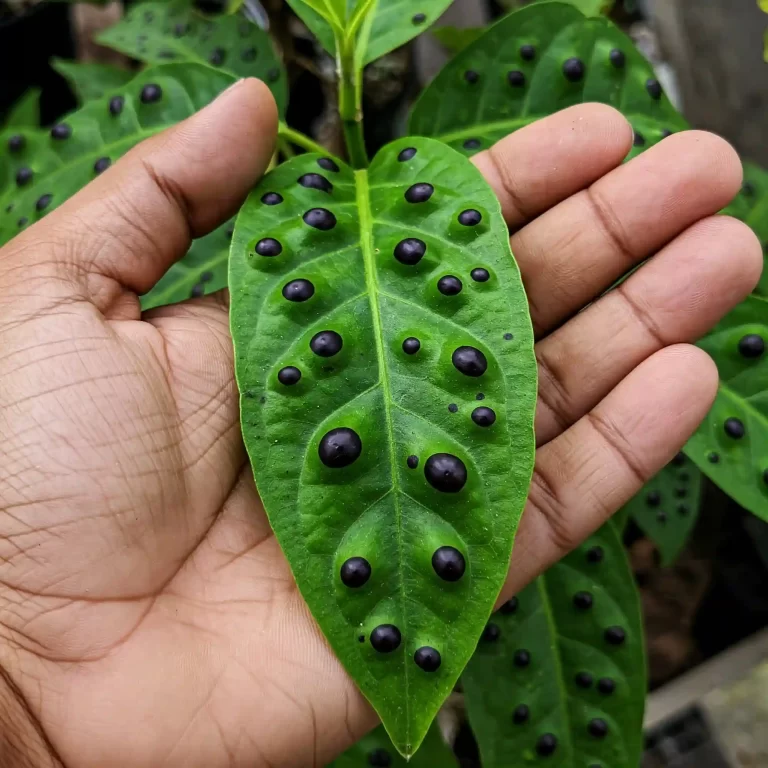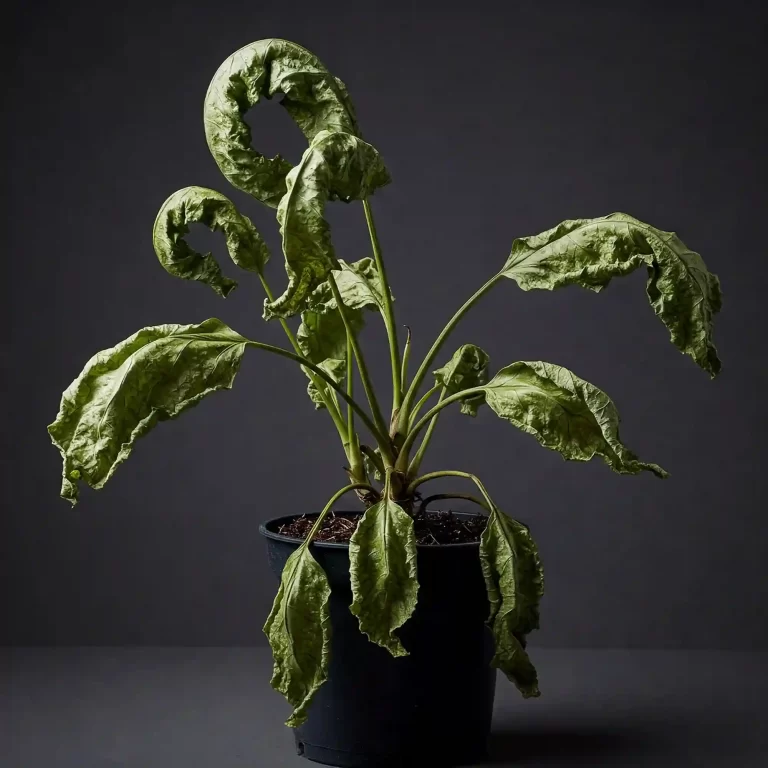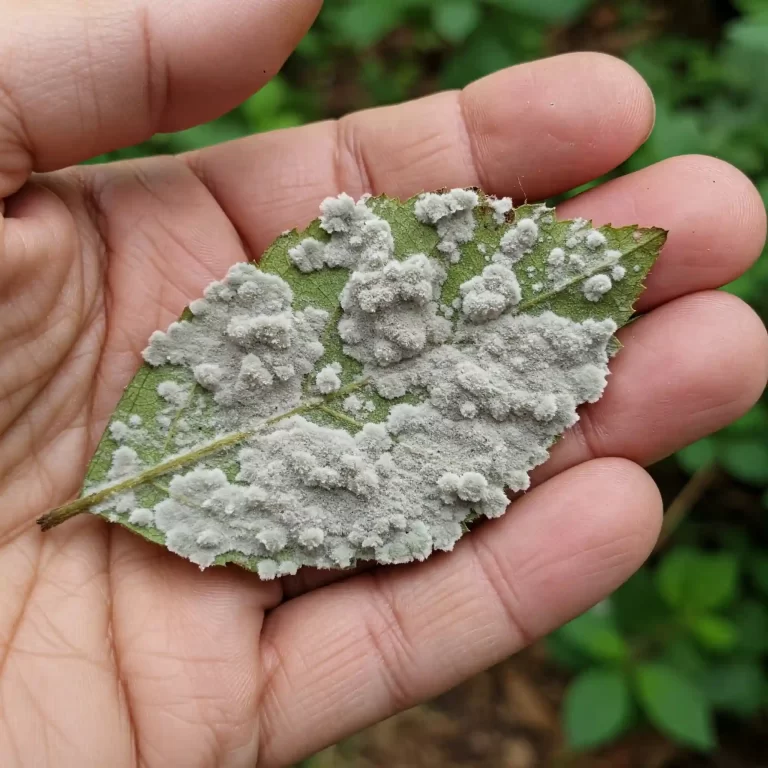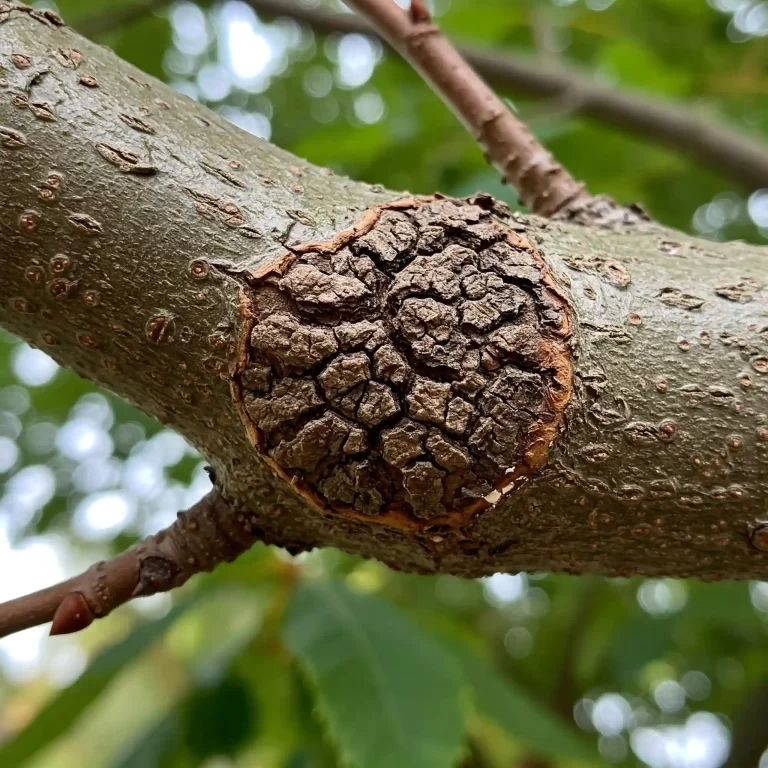| – There are different types of worms that can be found in potted plants, some of which are beneficial and some of which are harmful. |
| – Potworms, red wigglers, and millipedes are generally harmless or beneficial for the soil and the plants, as they feed on decomposing organic matter and help aerate the soil and recycle nutrients. |
| – Grub worms and parasitic nematodes are harmful for the plants and the soil, as they feed on the roots, stems, leaves, or fruits of plants and can cause wilting, yellowing, stunted growth, deformities, diseases, and reduced yield. |
| – It is important to monitor your plants regularly and take appropriate measures to prevent or treat any worm infestation, such as adjusting the soil pH, moisture, and temperature, removing dead or infected plant parts, applying natural or chemical pesticides, and introducing beneficial organisms. |
Have you ever noticed some tiny creatures crawling in your potted plants? Do you wonder what they are and how they affect your plants? If so, you are not alone. Many gardeners encounter different types of worms in their potted plants, and they may have mixed feelings about them. Some worms are good for your plants, while others are bad. Some worms are easy to spot, while others are hard to detect. Some worms are easy to get rid of, while others are difficult to control.
In this article, we will help you identify and deal with different types of worms in your potted plants. We will explain their characteristics, effects, and how to prevent or treat them. We will also provide some tips and tricks on how to keep your plants healthy and happy. By the end of this article, you will have a better understanding of the worms in your potted plants and how to handle them.
Potworms: The Tiny White Worms that Love Organic Matter
Potworms are small white worms that live in the top layer of the soil. They are also known as enchytraeids, and they belong to the same phylum as earthworms. They are about 1/4 inch long and have a segmented body. They feed on decomposing organic matter, such as dead leaves, roots, or compost. They help aerate the soil and improve its fertility. They do not harm the plant roots or the soil ecosystem.
Potworms prefer acidic soil and can multiply quickly if there is enough food source. They can become a nuisance if they are too many, as they can reduce the available nutrients for the plants and make the soil too acidic. They can also attract predators, such as birds, that can damage the soil and the plants.
To prevent or reduce potworm infestation, you can do the following:
- Adjust the soil pH by adding lime, wood ash, or crushed eggshells to make it more alkaline.
- Reduce the amount of organic matter in the soil by removing dead or decaying plant parts, or using less compost or manure.
- Increase the drainage of the soil by adding sand, perlite, or vermiculite to make it less moist.
- Introduce some beneficial organisms, such as predatory nematodes, that can feed on potworms and reduce their population.
Red Wigglers: The Reddish-Brown Worms that Are Great for Vermicomposting
Red wigglers are reddish-brown worms that are often used for vermicomposting. They are also known as Eisenia fetida, and they belong to the same phylum as earthworms. They are about 2 inches long and have a segmented body. They feed on organic matter and help break down tougher materials, such as cardboard and paper. They can improve the soil quality and nutrient availability for the plants. They are usually harmless to the plants, unless they are too many and compete for space and resources.
Red wigglers can be found in potted plants if they are added intentionally or accidentally. They can be added intentionally to create a vermicomposting system, where the worms convert the organic waste into rich fertilizer for the plants. They can be added accidentally if the soil or the compost used for the plants contains red wigglers or their eggs.
To maintain a healthy balance of red wigglers in potted plants, you can do the following:
- Provide enough food for the worms by adding organic waste, such as vegetable scraps, coffee grounds, or shredded paper, to the soil or the compost bin.
- Avoid overfeeding the worms by adding only small amounts of food at a time and waiting until they finish before adding more.
- Keep the soil or the compost moist but not wet by watering it regularly and draining the excess water.
- Keep the soil or the compost warm but not hot by placing it in a shaded area and avoiding direct sunlight or heat sources.
- Harvest the worm castings periodically by separating the worms from the soil or the compost and using the castings as fertilizer for the plants.
Grub Worms: The White or Cream-Colored Worms that Can Damage Your Plant Roots
Grub worms are the larvae of beetles, such as June bugs, Japanese beetles, and chafer beetles. They are white or cream-colored worms with brown heads and six legs. They are about 1/2 inch to 2 inches long and have a C-shaped body. They feed on the roots of plants and can cause wilting, yellowing, and stunted growth. They can also attract predators, such as moles, skunks, and birds, that can damage the soil and the plants.
Grub worms can be found in potted plants if the soil or the compost used for the plants contains beetle eggs or larvae. They can also be transferred from other infested plants or areas. They are more active and destructive in the spring and the fall, when the soil temperature is between 50°F and 60°F.
To prevent or treat grub worm infestation, you can do the following:
- Inspect the soil or the compost for beetle eggs or larvae before using it for the plants. Discard any infested soil or compost or treat it with boiling water or bleach to kill the eggs or larvae.
- Check the roots of the plants for signs of grub worm damage, such as holes, tunnels, or chew marks. Remove any infested plants or parts and dispose of them properly.
- Apply natural or chemical pesticides to the soil or the plants to kill the grub worms and their adult beetles. Some examples of natural pesticides are neem oil, diatomaceous earth, or nematodes. Some examples of chemical pesticides are carbaryl, imidacloprid, or trichlorfon. Follow the instructions and precautions on the label when using any pesticide.
- Introduce some beneficial organisms, such as predatory wasps, beetles, or flies, that can parasitize or feed on the grub worms and reduce their population.
Millipedes: The Brown or Black Arthropods that Curl Up When Disturbed
Millipedes are not actually worms, but arthropods with many legs and segmented bodies. They are usually brown or black in color and curl up when disturbed. They are about 1/4 inch to 4 inches long and have a cylindrical or flattened body. They feed on decaying organic matter and help recycle nutrients in the soil. They are generally harmless to the plants, unless they are too many and start feeding on the plant tissues.
Millipedes can be found in potted plants if the soil or the compost used for the plants contains millipedes or their eggs. They can also be transferred from other moist and dark places, such as leaf litter, mulch, or wood piles. They are more active and visible in the spring and the fall, when the soil is moist and warm.
To control the population of millipedes in potted plants, you can do the following:
- Reduce the moisture and organic matter in the soil by watering it less frequently and removing dead or decaying plant parts.
- Increase the ventilation and light in the area where the plants are kept by placing them in a sunny or airy spot and avoiding overcrowding.
- Remove or relocate any nearby sources of millipedes, such as leaf litter, mulch, or wood piles, or cover them with plastic or metal to prevent access.
- Trap or collect the millipedes manually by using a wet newspaper, a cardboard tube, or a jar with some bait, such as banana peel, apple core, or potato slice, and dispose of them properly.
Parasitic Nematodes: The Microscopic Worms that Can Infect Your Plants
Parasitic nematodes are microscopic worms that can infect the roots, stems, leaves, or fruits of plants. They are also known as plant-parasitic nematodes, and they belong to the same phylum as earthworms. They are about 0.01 inch to 0.04 inch long and have a slender and unsegmented body. They feed on the plant cells and sap and can cause various symptoms, such as galls, lesions, deformities, wilting, and reduced yield. They can also transmit diseases and viruses to the plants.
Parasitic nematodes can be found in potted plants if the soil or the compost used for the plants contains nematodes or their eggs. They can also be spread through contaminated water, tools, or plants. They are more prevalent and problematic in warm and moist conditions, when the plants are stressed or weakened.
To detect and treat parasitic nematode infection, you can do the following:
- Examine the roots, stems, leaves, or fruits of the plants for signs of parasitic nematode damage, such as galls, lesions, deformities, wilting, or reduced yield. You can also use a microscope or a magnifying glass to look for the nematodes or their eggs in the plant tissues or the soil.
- Send a sample of the infected plant or soil to a laboratory or a diagnostic service for confirmation and identification of the nematode species and population.
- Apply natural or chemical nematicides to the soil or the plants to kill the nematodes and their eggs. Some examples of natural nematicides are marigold, garlic, or mustard. Some examples of chemical nematicides are oxamyl, fenamiphos, or fosthiazate. Follow the instructions and precautions on the label when using any nematicide.
- Introduce some beneficial organisms, such as antagonistic fungi, bacteria, or nematodes, that can compete with, inhibit, or feed on the parasitic nematodes and reduce their population.
Conclusion
Worms are common inhabitants of potted plants, and they can have different effects on the plants and the soil. Some worms, such as potworms, red wigglers, and millipedes, are generally harmless or beneficial, as they feed on decomposing organic matter and help aerate the soil and recycle nutrients. Some worms, such as grub worms and parasitic nematodes, are harmful, as they feed on the plant roots, stems, leaves, or fruits and can cause wilting, yellowing, stunted growth, deformities, diseases, and reduced yield.
It is important to monitor your plants regularly and take appropriate measures to prevent or treat any worm infestation, such as adjusting the soil pH, moisture, and temperature, removing dead or infected plant parts, applying natural or chemical pesticides or nematicides, and introducing beneficial organisms. By doing so, you can keep your plants healthy and happy and enjoy the fruits of your labor.
We hope this article has helped you identify and deal with different types of worms in your potted plants. If you have any questions, comments, or feedback, please feel free to share them with us. We would love to hear from you and learn from your experience. Thank you for your time and attention. Happy gardening!



